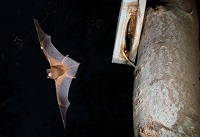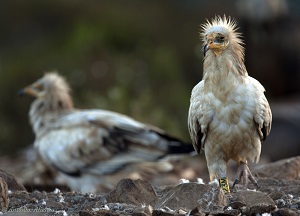
Welcome
Welcome to the official website of the Doñana Biological Station (EBD-CSIC)...

The Doñana Biological Station: EBD-CSIC
The Doñana Biological Station is a public Research Institute belonging to the Spanish Council for Scientific Research CSIC in the area of Natural Resources...

Mission
Our fundamental mission is to carry out multidisciplinary research of the highest standard directed to understanding the way in which biodiversity is generated, maintained and deteriorates, as well as the consequences of its loss...

Our methods
We apply many techniques within a multidisciplinary framework, from molecular genetics to remote sensing, and from modelling to physiological and isotopic analyses...

Monitoring the environment
Monitoring biodiversity at the Doñana Natural Space cover a wide range of communities, including both terrestrial and aquatic organisms...

Aims
Our aims include the study of the ecological and evolutionary processes by combining field work, mathematical and statistical models and physiological and genetic analysis...
 Outstanding
Outstanding
-
 Blood lead levels in an endangered vulture species decreased following restrictions on hunting practices
Blood lead levels in an endangered vulture species decreased following restrictions on hunting practices -
 Invasive blue crabs can travel more than 100 km upstream
Invasive blue crabs can travel more than 100 km upstream -
 Predation by owls affects the survival of the colony of greater noctule bats in Doñana
Predation by owls affects the survival of the colony of greater noctule bats in Doñana -
 A study led by the CSIC finds that the Egyptian vulture selects the areas with the highest density of individuals to reproduce for the first time
A study led by the CSIC finds that the Egyptian vulture selects the areas with the highest density of individuals to reproduce for the first time -
 Human impact is changing the way biodiversity is organized
Human impact is changing the way biodiversity is organized
 News
News
Content with tag threatened species .
 Blood lead levels in an endangered vulture species decreased following restrictions on hunting practices
Blood lead levels in an endangered vulture species decreased following restrictions on hunting practices
 Invasive blue crabs can travel more than 100 km upstream
Invasive blue crabs can travel more than 100 km upstream
 Predation by owls affects the survival of the colony of greater noctule bats in Doñana
Predation by owls affects the survival of the colony of greater noctule bats in Doñana
The increase in these deaths might be related to the lack of alternative roosts due to the loss of habitat and breeding areas because of human activity
 A study led by the CSIC finds that the Egyptian vulture selects the areas with the highest density of individuals to reproduce for the first time
A study led by the CSIC finds that the Egyptian vulture selects the areas with the highest density of individuals to reproduce for the first time
The median dispersal distance was 48 km, while there were cases of movement longer than 500 km to settle as breeders. In addition, it was detected that females and males followed different...





